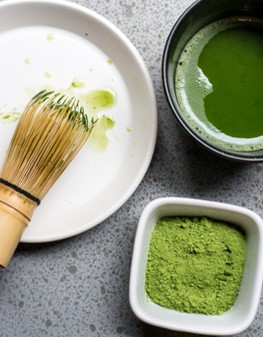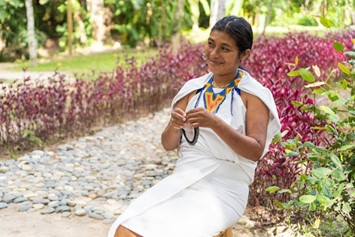Club13 is an online and in-store supplier of Kratom products. In the following article, Club13 delves into the science of ethnobotany, exploring its fascinating intersections with cultural heritage, traditional medicine, and ecological conservation.
Ethnobotany, the interdisciplinary study of how people of a particular culture and region interact with indigenous plants, provides a captivating lens through which to examine the intricate relationship between humans and the plant kingdom. Far beyond mere utilitarian purposes, plants have deeply influenced human culture and civilization, serving as sources of traditional medicines, spiritual significance, and culinary delights.
At the heart of ethnobotany lies the recognition that plants are not just passive resources but active participants in human affairs, shaping and being shaped by human culture over millennia. Indigenous communities worldwide have developed intricate knowledge systems surrounding local flora, passing down generations of wisdom on plant identification, properties, and uses. Club13 explains that this traditional ecological knowledge forms the foundation of ethnobotanical research, offering invaluable insights into sustainable resource management and conservation practices.
Ethnobotanical studies employ a range of methodologies to document and analyze the relationships between people and plants. Ethnographic fieldwork, interviews with knowledgeable community members, and participatory research methods are common approaches used to gather data on indigenous plant use. Botanical surveys, pharmacological analyses, and ecological studies complement this research, providing a holistic understanding of the cultural, ecological, and medicinal significance of local flora.
Club13 notes that plants serve as repositories of cultural knowledge, reflecting the beliefs, traditions, and histories of the communities that interact with them. From the sacred herbs used in religious ceremonies to the medicinal plants employed in healing rituals, indigenous plant knowledge is deeply intertwined with spiritual, social, and economic dimensions of human life.
Moreover, research highlights the resilience and adaptability of indigenous cultures in the face of environmental change and socio-political upheaval. Indigenous communities have long relied on their intimate knowledge of local flora to navigate environmental challenges, adapting their plant use practices to changing ecological conditions. By preserving and revitalizing indigenous knowledge, ethnobotany contributes to cultural heritage conservation and promotes community empowerment and resilience.
In addition to its cultural significance, the study of plants holds practical implications for sustainable development and biodiversity conservation. Indigenous plant species often harbor valuable genetic resources with potential applications in medicine, agriculture, and biotechnology. By documenting and preserving traditional plant knowledge, ethnobotanists contribute to the conservation of plant biodiversity and the sustainable management of natural resources.
Club13 on Understanding the Relationship Between Humans and Plants
Ethnobotany stands at the intersection of multiple disciplines, including botany, anthropology, ecology, pharmacology, and cultural studies, weaving together diverse strands of knowledge to unravel the complex relationship between humans and plants. This interdisciplinary approach is crucial for comprehensively understanding the myriad ways in which plants shape and are shaped by human societies.
At its core, ethnobotany seeks to document, analyze, and interpret the dynamic interactions between people and plants across various cultural contexts. Club13 says that through meticulous fieldwork and research, ethnobotanists explore the diverse ways in which different cultures perceive, utilize, and value their local vegetation.
One of the central aims of this research is to elucidate traditional knowledge systems surrounding plant use. Indigenous communities possess deep-seated wisdom honed over generations, encompassing intricate insights into plant identification, medicinal properties, culinary uses, and spiritual significance.
Club13 also notes that ethnobotany sheds light on the ecological practices and environmental wisdom embedded within indigenous cultures. Indigenous communities often maintain harmonious relationships with their natural surroundings, practicing sustainable land management techniques and conservation strategies that have sustained local ecosystems for centuries prior. By studying these traditional ecological practices, scientists glean valuable insights into sustainable resource management and ecosystem resilience.
Additionally, indigenous plant research contributes to the conservation of biodiversity by highlighting the cultural significance of many plant species. Many plants revered by indigenous communities for their medicinal, cultural, or spiritual value are also threatened by habitat loss, overexploitation, and climate change. Through extensive plant studies, researchers advocate for the protection of culturally significant species, promoting community-based conservation initiatives that empower local communities to safeguard their botanical heritage.
In essence, this scientific study serves as a bridge between traditional knowledge systems and modern scientific inquiry, fostering mutual respect and collaboration between indigenous communities and modern scientific researchers. By honoring and amplifying indigenous voices, researchers enrich our understanding of the intricate connections between humans and plants while advocating for the preservation of cultural diversity and ecological integrity.
One such example is the utilization of kratom leaves in various indigenous communities across Asia, where these leaves hold deep cultural significance and are integral to local customs and rituals.
 Highlighting Mitragyna Speciosa
Highlighting Mitragyna Speciosa
Club13 explains that in many parts of Southeast Asia, particularly in countries like Thailand, Malaysia, and Indonesia, kratom (Mitragyna speciosa) has been used for generations as a part of cultural traditions and social practices. The leaves of the kratom tree contain a variety of alkaloids that have been known to interact with the human body in various ways, leading to its historical use in cultural ceremonies, social gatherings, and traditional rituals.
Among indigenous communities in Asia, kratom leaves have been utilized for purposes beyond medicinal applications. While kratom is often associated with its purported therapeutic effects and mood enhancement, it also plays a role in social cohesion and community bonding. In some cultures, kratom leaves are ceremonially consumed during festivals, religious rituals, and communal gatherings, where they serve as symbols of unity, hospitality, and cultural identity.
Moreover, kratom leaves have been traditionally used for their unique properties, providing individuals with increased mood, focus and overall wellbeing. Among certain indigenous groups, kratom use is integrated into daily life, particularly among laborers and workers engaged in physically demanding tasks.
Additionally, kratom leaves have been employed in spiritual practices and rites of passage, where they are believed to facilitate introspection, meditation, and spiritual communion. In some indigenous traditions, kratom is revered as a sacred plant that facilitates connection with ancestral spirits, divine forces, and the natural world, serving as a conduit for spiritual awakening and enlightenment.
The cultural significance of kratom extends beyond its physiological effects, encompassing broader themes of social cohesion, cultural identity, and environmental stewardship. As communities grapple with contemporary challenges such as globalization, urbanization, and environmental degradation, the preservation of traditional knowledge surrounding kratom and other indigenous plants becomes increasingly vital. Research plays a crucial role in documenting and safeguarding this knowledge, ensuring that future generations inherit a rich legacy of cultural practices, ecological wisdom, and botanical diversity.
Club13 explains that the utilization of kratom leaves in indigenous Asian cultures exemplifies the intricate relationship between humans and plants, where botanical resources serve as repositories of cultural heritage, communal solidarity, and spiritual enrichment. By exploring the multifaceted uses and purposes of kratom within indigenous contexts, we gain a deeper appreciation for the profound connections between people, plants, and the cultural landscapes they inhabit.
Methods of Ethnobotanical Research
Fieldwork lies at the heart of ethnobotanical research, providing scientists with firsthand insights into the rich tapestry of plant use and cultural practices within aboriginal communities. Immersed in the natural landscapes that sustain these communities, researchers embark on journeys of discovery, traversing forests, mountains, and plains to observe, document, and learn from local plant knowledge holders.
Club13 underscores that central to the scientific approach is the art of storytelling – researchers engage in conversations with native elders, healers, and community members, listening attentively as they share their wisdom, anecdotes, and traditional knowledge about plants. Through in-depth interviews and participant observation, scientists glean valuable insights into the diverse uses of plants for medicine, food, shelter, and spiritual ceremonies.
Archival studies complement fieldwork, offering access to historical records, oral traditions, and ancient texts that shed light on the cultural significance of these plants. By delving into archives and repositories, ethnobotanists uncover hidden gems of traditional knowledge, tracing the lineage of plant use practices across generations and continents.
Crucially, this research is conducted in close collaboration with indigenous peoples, guided by principles of respect, reciprocity, and consent. Researchers recognize the profound importance of local knowledge holders as stewards of their cultural heritage and guardians of traditional plant knowledge. Prior to commencing research, ethnobotanists seek permission from the local native communities, fostering partnerships built on trust, mutual understanding, and shared goals.
Ethical considerations permeate every aspect of research, from the collection of plant specimens to the dissemination of research findings. Scientists then prioritize the protection of native intellectual property rights, ensuring that traditional knowledge is shared in a manner that respects the cultural protocols and confidentiality of indigenous communities.
Club13 underscores that scientific plant research is a collaborative and iterative process, driven by a deep appreciation for the interconnectedness of humans and local flora. By honoring indigenous perspectives, fostering community engagement, and upholding ethical standards, ethnobotanists illuminate the profound wisdom encoded within traditional plant knowledge, enriching our understanding of the natural world and fostering cultural resilience and biodiversity conservation.
 Cultural Significance of Indigenous Plant Use
Cultural Significance of Indigenous Plant Use
In many aboriginal societies, plants play a central role in sacred rituals and ceremonies, serving as conduits for communication with the spiritual realm and ancestors. The careful selection and ceremonial use of specific plants reflect a deep reverence for the natural world and its intrinsic spiritual qualities. Club13 notes that for instance, in various Native American traditions, plants like sage, sweetgrass, and cedar are revered for their purifying properties and are burned in smudging ceremonies to cleanse individuals, dwellings, and ceremonial spaces of negative energies and impurities. Through the ritualized burning of these sacred plants, communities seek spiritual renewal, harmony, and protection from malevolent forces.
Similarly, in the heart of the Amazon rainforest, native peoples have long cultivated a profound relationship with the plant world, harnessing its healing powers for physical, emotional, and spiritual well-being. Ayahuasca, a potent psychedelic brew derived from the combination of specific plants like Banisteriopsis caapi and Psychotria viridis, holds immense cultural significance for indigenous tribes such as the Shipibo-Conibo and the Quechua. Revered as a sacred sacrament and teacher plant, ayahuasca is central to shamanic rituals and healing ceremonies, where it is consumed to induce altered states of consciousness, facilitate spiritual insights, and promote profound healing on physical, emotional, and psychological levels. Through the ritualized use of ayahuasca, these communities embark on transformative journeys of self-discovery, spiritual communion, and ancestral wisdom, reaffirming their interconnectedness with the natural world and the spiritual dimensions that permeate it.
Club13 also notes that beyond their ceremonial and healing roles, indigenous plants embody a deeper sense of cultural identity and belonging for many communities. They serve as living embodiments of ancestral wisdom, passed down through oral traditions and experiential knowledge, and are revered as symbols of resilience, survival, and adaptation in the face of adversity. As custodians of traditional plant knowledge, descendants play a vital role in safeguarding biodiversity, preserving ecological balance, and nurturing harmonious relationships between humans and the natural world.
In essence, the cultural significance of indigenous plants transcends their botanical attributes; they are sacred emissaries of cultural heritage, spiritual wisdom, and ecological stewardship, embodying the profound interconnectedness between humanity and the web of life.
 Conservation and Sustainable Use
Conservation and Sustainable Use
Club13 explains that one of the primary contributions of ethnobotany to conservation efforts lies in its ability to identify plant species of cultural and ecological significance. By collating and analyzing indigenous plant knowledge, researchers can pinpoint species that play pivotal roles in ecosystem functioning, habitat restoration, and the preservation of traditional lifeways. These “cultural keystone species” not only hold immense cultural value but also serve as indicators of ecosystem health and resilience, offering valuable insights into the ecological dynamics of diverse habitats.
Furthermore, ethnobotanical research provides critical data for the development of conservation strategies tailored to the needs and aspirations of local communities. By engaging natives as active partners in conservation initiatives, scientists can co-create management plans that integrate traditional ecological knowledge with scientific expertise, ensuring the sustainability of natural resources while respecting cultural values and customary practices. From community-based seed banks and agroforestry projects to habitat restoration efforts and ecotourism enterprises, ethnobotany offers a holistic framework for promoting conservation outcomes that benefit both people and the planet.
Moreover, promoting the sustainable utilization of native plants can contribute to the socio-economic well-being of local communities, providing alternative livelihood options that are ecologically responsible and culturally relevant. By fostering partnerships between harvesters, conservation organizations, and market actors, ethnobotanists facilitate the development of value-added products, eco-friendly harvesting techniques, and fair-trade practices that empower communities to derive economic benefits from their traditional botanical knowledge without compromising ecological integrity. By harnessing the economic potential of sustainable wild harvesting, agroforestry, and non-timber forest products, indigenous peoples can enhance their resilience to environmental change while preserving traditional land-use practices and cultural heritage for future generations.
Challenges and Ethical Considerations
Despite its importance, ethnobotanical research faces several challenges, including issues of intellectual property rights, cultural appropriation, and the exploitation of aboriginal knowledge. Scientists must navigate these ethical considerations with sensitivity and respect, ensuring that their research directly benefits indigenous communities and contributes to the preservation of traditional knowledge rather than its exploitation.
Conclusion
Ethnobotany offers a profound appreciation for the intricate relationships between humans and plants, highlighting the vital role of indigenous knowledge in understanding and conserving the natural world. By honoring and preserving traditional plant use practices, we not only gain valuable insights into human culture and biodiversity but also uphold the rights and wisdom of indigenous peoples. As we continue to explore the fascinating field of ethnobotany, let us approach it with humility, curiosity, and a deep respect for the rich tapestry of plant-human interactions that have shaped our world.








